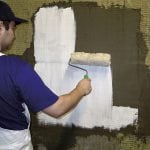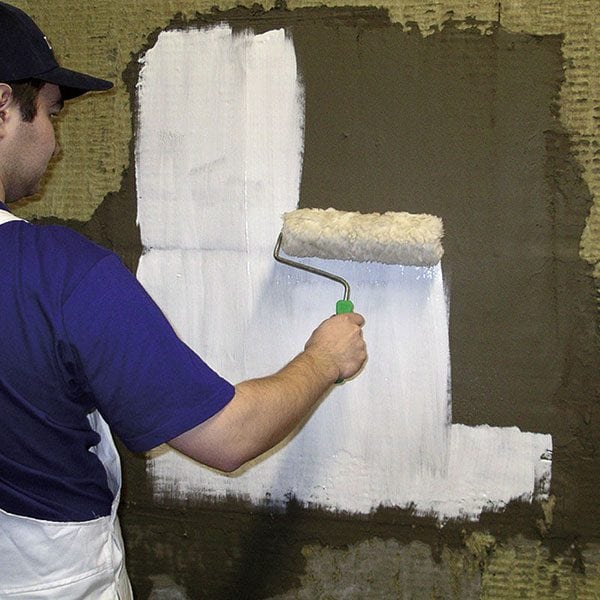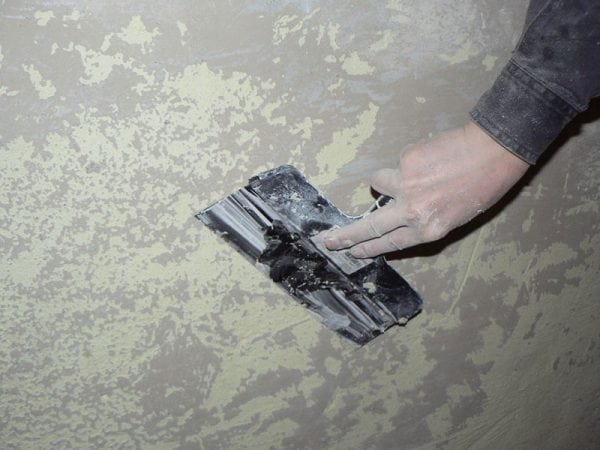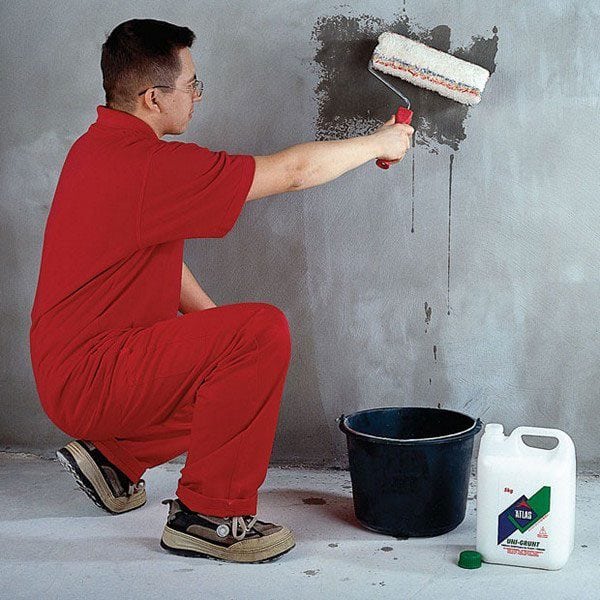A primer under a tile has become an almost indispensable element of this type of finishing work. This versatile and practical material helps to eliminate the shortcomings of the joined surfaces that interfere with the full implementation of the finishing work. And today, thanks to the unique features of modern primer mixes, even those walls on which tiles could not stand before could be decorated for many years.
- What is a primer
- What does the modern market offer?
- Benefits of using
- Absorbent surface treatment
- Application
- Non-absorbent surface treatment
- Cooking features

What is a primer
The primer is a special liquid composition that is used for pre-treatment of the base of the walls, their degreasing and dust removal. This composition improves adhesion to the future coating and strengthens its foundation.
Typically, a wall, floor or ceiling is treated with a primer immediately before applying any other coating. Primer mixes must be used before laying tiles on a surface of concrete, brick, and even drywall, if you want to achieve excellent quality of all work.
to contents ↑What does the modern market offer?
The modern primer, which is used before laying the tiles, is divided into two main categories:
- for surfaces with absorbent characteristics (used for work on brick, concrete, putty or plaster);
- for surfaces with non-absorbing characteristics (used to work with ceramic granite tiles, oil paint or metal structures);
Deep penetration primers for surfaces with absorbent characteristics are designed to strengthen the substrate, as well as to ensure maximum bonding of tile adhesive to the substrate. The solution of such a primer is a concentrated liquid that must be prepared before application.
to contents ↑Primers for non-absorbent surfaces are used to increase the adhesion of the substrate, making smooth surfaces more rough. It is produced in the form of a pasty mass, packed in a bucket.
Benefits of using
The advantages of using just such compositions include the ability to minimize the time and laboriousness of preparing the base for subsequent tile laying, and also increases the adhesion properties of the finishing material and the base, which greatly improves the quality of the work performed.
It is worth noting that the choice of soil for tiles in most cases is determined by the type of base. If we are talking about brick, foam blocks or porcelain stoneware, in most cases it may be necessary to re-treat with a copious amount of primer mixture.
to contents ↑Absorbent surface treatment
Immediately before performing such work, the walls in the bathroom and kitchen must be prepared, cleaned of dust, dirt and residues from previous coatings. From the walls that were previously covered with oil paint, we remove the swollen remains of the coating with a spatula. Here you can learn more about how to glue tile on paint.
Instruments:
- roller;
- fly hand;
- special tray.
Application
In order to apply a primer mixture of deep penetration to the surface, you must perform the following steps:
- The purchased primer concentrate is diluted with ordinary water in the ratio indicated on the package. The resulting mixture is poured into the tray.
- The roller is immersed in a container, wrung out. The primer is smoothly applied to the prepared surface.
- We wait until the soil dries completely. If the surface is smeared, it must be treated with a solution again. If not, then you can start laying tiles.
After completion of work, the roller and container must be thoroughly washed from the remnants of the mixture, otherwise they will become worthless.
to contents ↑
Non-absorbent surface treatment
For applying the composition to non-absorbent surfaces, a roller, brushes and a special container are also needed. After opening the container, the composition must be thoroughly mixed, since it includes a polymer component and a certain amount of silica sand, which can delaminate.
The composition is applied to the base with a fly brush. This is a fairly simple job that does not require special qualifications or experience.
After completion of work, all tools must be thoroughly washed, otherwise they will become unusable.
This type of soil is not used very often. Since it is sold in large volumes, after completion of work most of the material, as a rule, remains superfluous. Many advanced repair specialists use the primer to make tile glue, which is simply kneaded on a deep penetration primer to a state of liquid sour cream. Such a mixture is applied to the surface with a brush and can fully replace the unique and expensive polymer mixtures with quartz filler.
to contents ↑Cooking features
It is worth noting that in order for the mixture to really penetrate deeply, it must be applied in two layers, without drying. The composition of the first layer to prepare in a ratio of one to sixteen (1:16) and apply in sufficient quantity. Wait until the first layer is absorbed and immediately apply the second layer, prepared in a ratio of one to twelve (1:12).
In case of violation of the application procedure, in the case when the first layer has managed to dry, the second layer will no longer be able to absorb well and the resulting protection layer will already be small.
When using compositions with a higher concentration, a film may form on the wall surface, which can be easily picked up with a sharp object and peeled off. And the strength of the material fastening can directly depend on the strength and reliability of the wall obtained during the operation of the film. But if everything is done correctly, as described in the first case, then even with double application, the appearance of a film can be avoided. The prepared soil perfectly permeates the base and holds even a weak solution.
It is worth noting that when laying tiles on any foundation, the use of a primer will be simply necessary. This mixture will remove excess dust, create a water repellent layer and provide the best quality for facing work.







